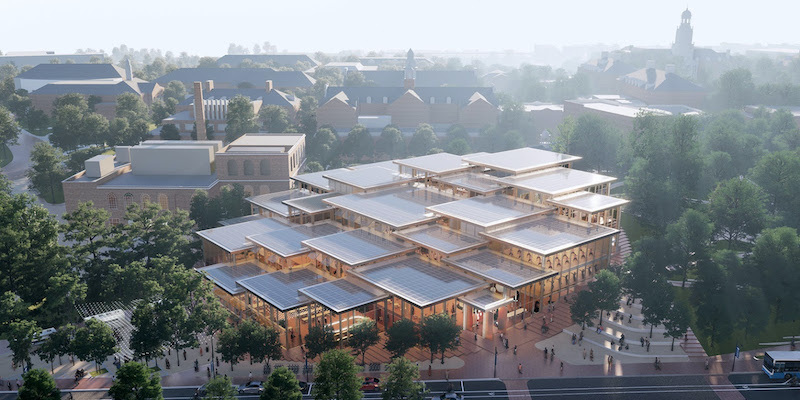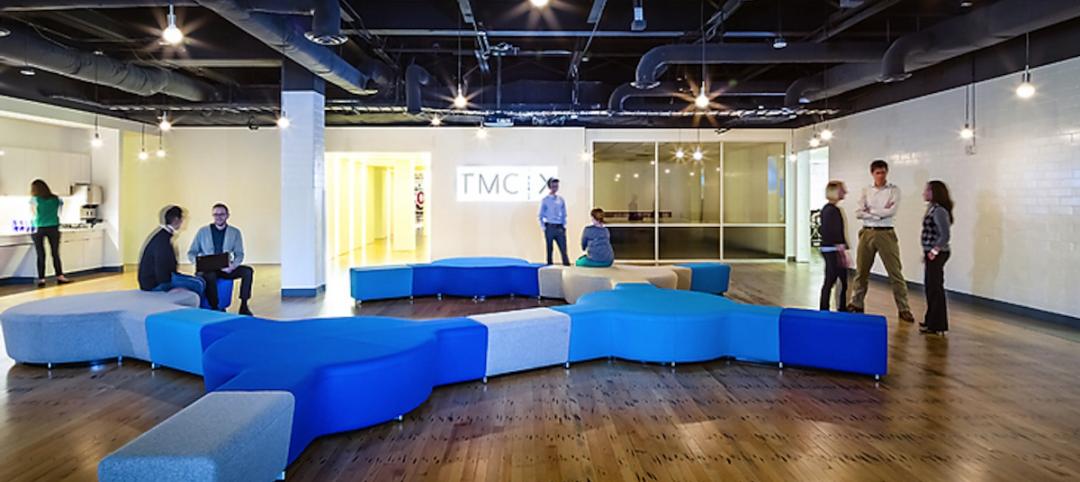BIG has been selected by Johns Hopkins University to design the Hopkins Student Center, or ‘The Village.’ The project will be an open, modern, welcoming facility that will act as a social engagement hub for all members of the Hopkins community.
The 150,000-sf building will include spaces for relaxation and socialization, creative and performing arts spaces, student resources and support spaces, lounges, a digital media center, a performance space with seating for 200 people, and a dining hall that connects directly to a new plaza along Charles Street.
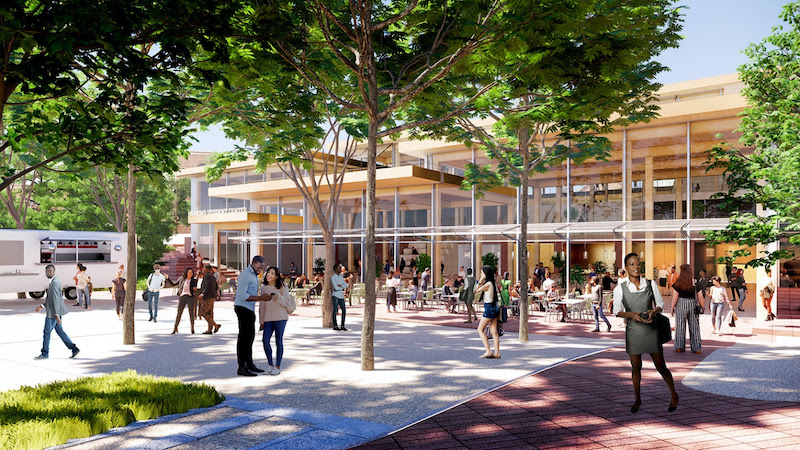
The Village will be strategically located on campus at the intersection of 33rd and Charles Streets and is conceived as a central living room surrounded by a collection of spaces tailored to the needs of the Hopkins community. It will turn the area into a hub that acts as a natural gateway connecting Charles Village and more than 3,500 Hopkins students who live in the neighborhood, to the heart of the Homewood campus.
Upon entering The Village, visitors will be met with a cascading interior landscape of dining, performance, lounging, and socializing. The mass timber structure will provide a warm and acoustically comfortable environment filled with natural light that filters between photovoltaic roof panels.
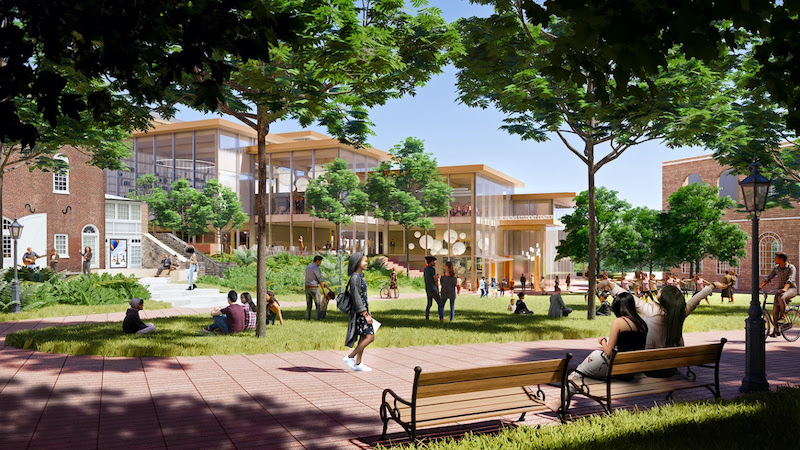
The interior landscape comprises a cluster of flexible spaces that open out on to four rejuvenated public spaces: an events-focused commons, the shaded paths of the Grove, an entry plaza at 33rd Street, and a new food market and plaza to the south. A new central plaza will also be included that can host pop-up exhibits or performances, vendors, and food trucks.
The Hopkins Student Center is set to begin construction in spring 2022 and is slated for completion by fall 2024. BIG is teaming with Shepley Bulfinch (Architect of Record), Rockwell Group (interior design), and Michael Van Valkenburg Associates (landscape design) on the project.
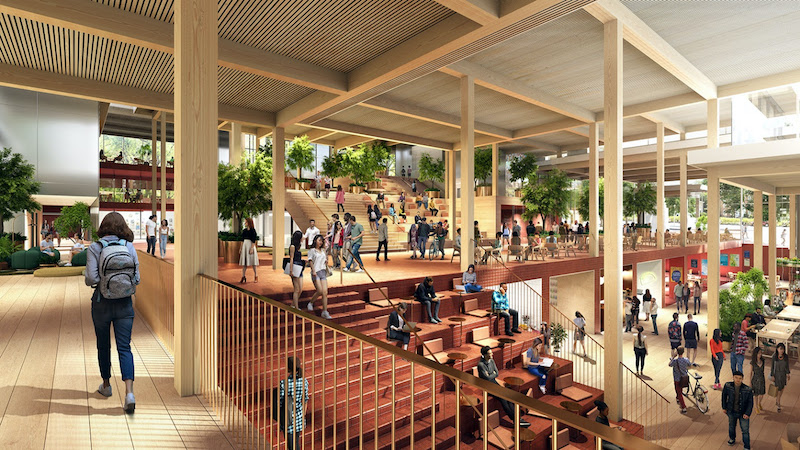
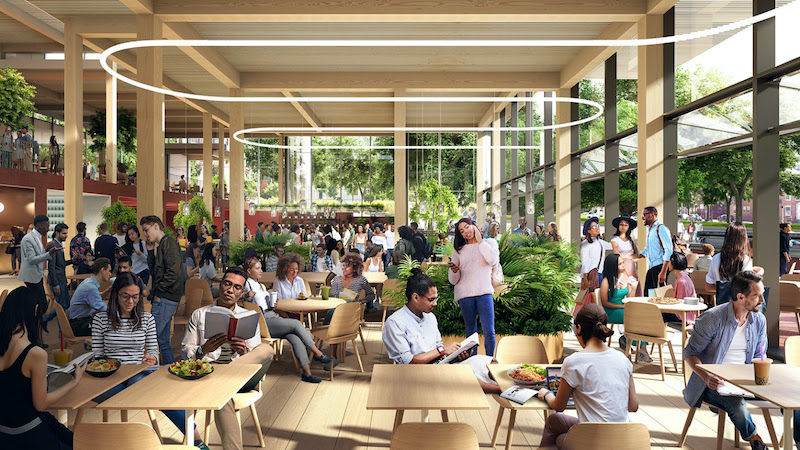
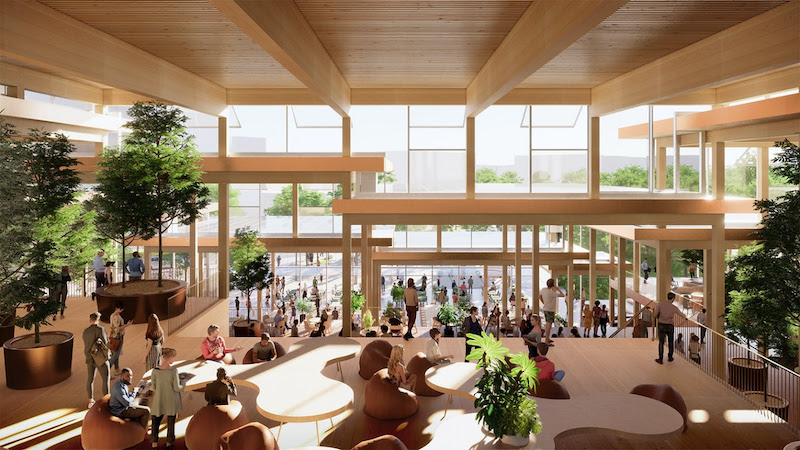

Related Stories
University Buildings | Jun 29, 2015
Ensuring today’s medical education facilities fit tomorrow’s healthcare
Through thought-leading design, medical schools have the unique opportunity to meet the needs of today’s medical students and more fully prepare them for their future healthcare careers. Perkins+Will’s Heidi Costello offers five key design factors to improve and influence medical education.
University Buildings | May 30, 2015
Texas senate approves $3 billion in bonds for university construction
For the first time in nearly a decade, Texas universities could soon have some state money for construction.
University Buildings | May 19, 2015
Special Report: How your firm can help struggling colleges and universities meet their building project goals
Building Teams that want to succeed in the higher education market have to help their clients find new funding sources, control costs, and provide the maximum value for every dollar.
University Buildings | May 19, 2015
Renovate or build new: How to resolve the eternal question
With capital budgets strained, renovation may be an increasingly attractive money-saving option for many college and universities.
University Buildings | May 19, 2015
KU Jayhawks take a gander at a P3 development
The P3 concept is getting a tryout at the University of Kansas, where state funding for construction has fallen from 20% of project costs to about 11% over the last 10 years.
University Buildings | May 5, 2015
Where the university students are (or will be)
SmithGroupJJR's Alexa Bush discusses changing demographics and the search for out-of-state students at public universities.
BIM and Information Technology | Apr 9, 2015
How one team solved a tricky daylighting problem with BIM/VDC tools, iterative design
SRG Partnership's Scott Mooney describes how Grasshopper, Diva, Rhino, and 3D printing were utilized to optimize a daylighting scheme at Oregon State University's new academic building.
Sponsored | University Buildings | Apr 8, 2015
Student Housing: The fight against mold starts in the bathroom
University Buildings | Apr 8, 2015
The competitive advantage of urban higher-ed institutions
In the coming years, urban colleges and universities will outperform their non-urban peers, bolstered by the 77 million Millennials who prefer to live in dense, diverse, and socially rich environments, writes SmithGroupJJR's Michael Johnson.
University Buildings | Mar 18, 2015
Academic incubators: Garage innovation meets higher education
Gensler's Jill Goebel and Christine Durman discuss the role of design in academic incubators, and why many universities are building them to foster student growth.


